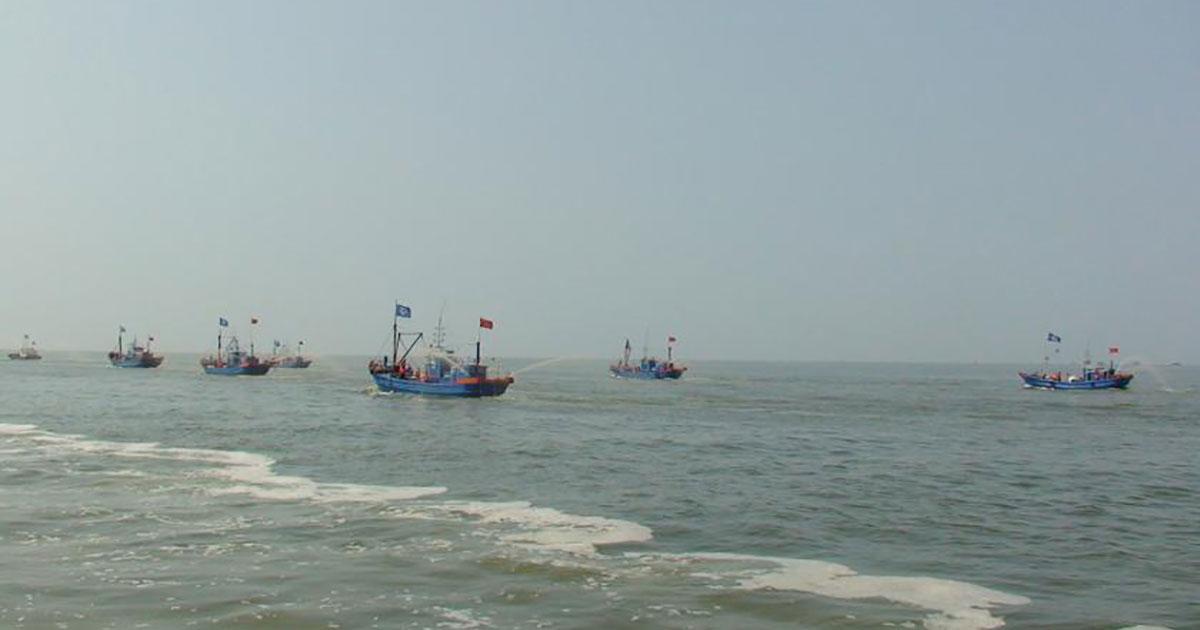Eutrophication happens when excessive nutrients from agricultural, industrial and urban wastes enter the seas, leading to serious disruption of marine ecosystems, damage to vital sea habitats and the spread of harmful algal blooms, commonly known as red tides. Nearly half of the world’s population lives within 100 km of a coast—an estimated 41 per cent of the global ocean is strongly affected by land-based human activities.
In 2008, massive green macroalgae blooms caused by eutrophication spread over 2,400 km2 in the Yellow Sea and East China Sea and 1 million tons had to be removed and treated at a cost of more than US$100 million.
A satellite imagery technique for timely detection of potential dead zones in the sea, developed by the UN Environment Northwest Pacific Regional Seas Programme is now ready for use to protect oceans from the serious threat of eutrophication.
Marine scientists from China, Japan, Republic of Korea and the Russian Federation meeting in Vladivostok, Russia in March 2019, endorsed the effectiveness of the Northwest Pacific Action Plan Eutrophication Assessment Tool (NEAT) in protecting the region from eutrophication that threatens marine and human health and can severely harm fisheries and tourism.
The Regional Seas Programme’s Northwest Pacific Action Plan intends to collaborate with global online search giant Google and the Japan Aerospace Exploration Agency to test NEAT to monitor eutrophication in oceans around the world, using cloud computing. “Eutrophication assessment with rapidly increasing amount of satellite data requires a simple but robust methodology like NEAT,” says Genki Terauchi of the Northwest Pacific Action Plan’s Special Monitoring and Coastal Environmental Assessment Regional Activity Centre who led development of the technique.
NEAT uses satellite-derived chlorophyll-a concentration levels and trends to detect potential eutrophic zones. Eutrophication results in high levels of phytoplankton growth and organic matter supply to marine ecosystems and chlorophyll-a concentrations are a reliable indicator of eutrophication.
Satellite monitoring data for chlorophyll-a concentration levels in Northwest Pacific seas was used for a Northwest Pacific Action Plan study led by Terauchi to devise the NEAT methodology. It overcomes difficulties with remote sensing such as estimating chlorophyll-a concentration in coastal waters due to turbidity caused by entry of water from land.
The Northwest Pacific Action Plan’s Special Monitoring Centre has been studying eutrophication since 2008 and has developed methodologies to assess eutrophication levels in the region. The NEAT methodology was reviewed at the eutrophication assessment meeting of marine scientists organized by the Northwest Pacific Action Plan’s Special Monitoring Centre in Vladivostok.
The Special Monitoring Centre has also developed an online portal on harmful algal blooms, countermeasures against harmful algal blooms and eutrophication monitoring guidelines for local government officials in coastal regions.
A significant reduction in marine pollution by 2025, in particular from land-based activities, is part of the commitment made by world leaders in the 2030 Agenda for Sustainable Development. “Use of the NOWPAP Eutrophication Assessment Tool will help countries in the region to report their progress to achieve Sustainable Development Goals,” said Ning Liu, Programme Officer of the Northwest Pacific Action Plan.
Story by UN Environment



